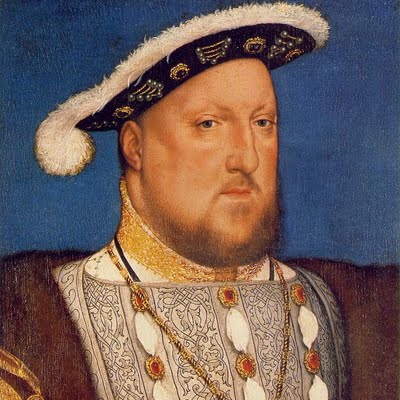The origins of the Church of England encapsulate a fascinating tumult of theological, political, and social dynamics that began during the tumultuous reign of Henry VIII and have evolved up to contemporary times. This narrative delineates the intersection of faith and governance, illustrating a distinct ecclesiastical identity that developed in opposition to the Roman Catholic Church. At the heart of this transformation lies the volatile personality of Henry VIII, whose marital discord inadvertently catalyzed a seismic shift in English Christianity.
In the early 16th century, England was firmly entrenched in the Catholic tradition, which was replete with rituals, papal authority, and an intricate hierarchy that extended its reach into earthly affairs. However, the fervor of the Protestant Reformation, which swept across Europe, seeded discontent and encouraged a reevaluation of ecclesiastical doctrines. Reformers like Martin Luther and John Calvin provoked a theological awakening, advocating for a more personal, scripture-based faith that rendered traditional mediators—such as priests and saints—obsolete in matters of salvation.
Henry VIII, a monarch characterized by his fiery temperament and insatiable desire for a male heir, found himself ensnared in a marital crisis with Catherine of Aragon. Their union had produced one surviving child—a daughter, Mary—but the crown rested heavily upon the weight of succession. In Henry’s eyes, the papal refusal to annul his marriage to Catherine, thereby preventing him from marrying Anne Boleyn, symbolized a challenge to his authority and, by extension, the autonomy of the English crown.
This predicament set the stage for a monumental severance from Rome. In 1534, the Act of Supremacy declared Henry the Supreme Head of the Church of England. This audacious move was less a matter of theological reformation and more emblematic of his desire for control, both over his marriage and his realm. By wresting ecclesiastical authority away from the Pope, Henry initiated a radical realignment of power—and firmly established the national church.
Despite its foundations in political expediency, the Church of England began to embrace many tenets of Protestant thought. The English Bible was translated and made available to the laity, facilitating a personal engagement with scripture. The Book of Common Prayer, promulgated by Thomas Cranmer, became a hallmark of liturgical practice. Through these innovations, the Church of England developed a unique character that blended Protestant reformative principles with traditional liturgical elements—a mediating force, often described as a “via media” between Catholicism and radical Protestantism.
However, the transition was not devoid of conflict. Under Henry’s successors—particularly Edward VI and Mary I—tug-of-war dynamics marked the ecclesiastical landscape. Edward VI, a Protestant, sought to further reform the church by embracing more radical Protestant principles, while Mary I endeavored to restore papal authority, resulting in the persecution of Protestants and ignominious martyrdom for many who adhered to the revised doctrines.
The ascension of Elizabeth I in 1558 ushered in a period of relative stability and consolidation for the Church of England. Elizabeth’s reign heralded the Elizabethan Religious Settlement, which aimed to create a church that was inclusive enough to draw disparate factions under one ecclesiastical umbrella. The 39 Articles established a framework for orthodoxy, delineating Anglican theology while allowing room for diversity of belief within certain parameters.
Throughout subsequent centuries, the Church of England continued to navigate a complex ecclesiastical landscape, adeptly managing internal divisions and external pressures. The Enlightenment, marked by rational inquiry and skepticism, posed fresh challenges to church authority. The rise of Methodism in the 18th century, led by figures like John Wesley, exemplified a growing discontent with the established church—a movement that, while entrenched in Anglican roots, sought a deeper, emotive engagement with faith.
The Victorian era brought another renaissance within the Church of England. A resurgence in Anglo-Catholic sentiments sought to reclaim the richness of tradition and ritual that had been obscured during prior reforms. This period also witnessed the development of various social and theological movements, including the Oxford Movement, which aimed to restore elements of Catholicism within Anglican practice. Paradoxically, these movements cultivated a diverse spectrum of beliefs within the Church, prompting tension but also a creativity rooted in faith.
The 20th century further challenged the Church’s relevance amid burgeoning secularism, yet it also sparked a series of bold ecclesiastical initiatives. The Anglican Communion expanded globally, engaging with diverse cultures and perspectives while maintaining its foundational ethos. Issues of social justice, gender equality, and interfaith dialogue came to the fore, inviting consideration on how the Church might adapt to modernity while upholding its theological roots.
In contemporary times, the Church of England embodies a perplexing tapestry of beliefs, representing a myriad of perspectives that engage with the ethos of faith in an ever-evolving socio-political climate. The dialogue between tradition and innovation continues, highlighting the essential nature of Anglicanism as a faith that both honors its historical foundations and embraces the complexities of modern existence. The Church finds itself grappling with questions about its role in society, the essence of faith, and how to engage an increasingly pluralistic world.
In conclusion, the origins of the Church of England unveil a rich historical narrative interwoven with strands of royal authority, theological evolution, and societal adaptation. It reveals how a desire for autonomy can lead to profound change, forging a distinct identity that resonates through centuries. The Church of England’s journey reflects not only the challenges faced by a national church but also the enduring quest for faith that transcends the complexities of human experience.



